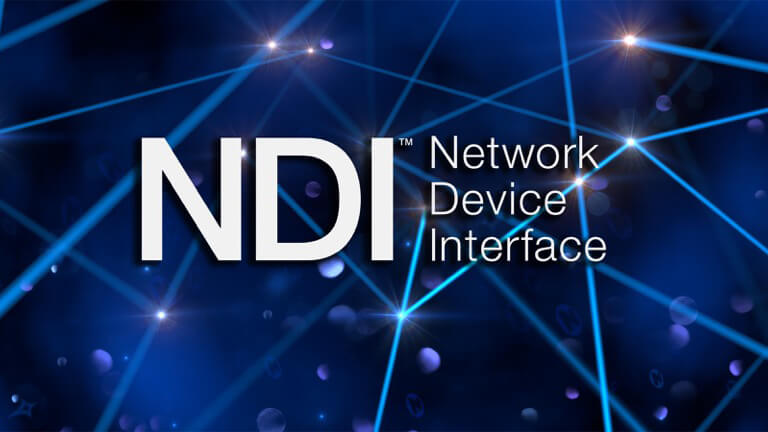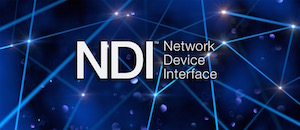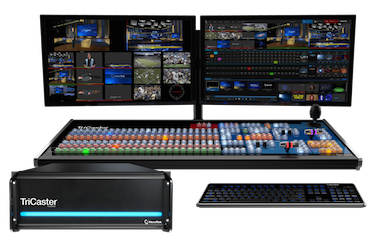You Already Have the Content You Need with NewTek’s Network Device Interface

Very gradually, without our fully realizing it, we have in casual discourse begun to refer to each other’s “feeds,” as if every person represents a unique broadcast channel producing content all day long. We don’t have to call or meet up with anyone to know where they are and how much fun they’re having. We can see the sandwich they had for lunch in real time. We used to say, “I heard,” or “I read,” but now it’s, “I saw in so-and-so’s feed.” Still, somehow it’s not offensive or jarring to borrow the word “feed” from news jargon when we refer to personal information, because actually, every person really is a content creator now.
So when in AV we lament the lack of content and the struggle to identify just who in a signal chain will be creating this elusive material, well… we should probably just look at the client’s desktop. And that holds true for nearly every client, not just the corporate ones with actual desks. Everyone has a desktop, in houses of worship, schools, hospitality venues, and on and on.
Those screens represent the motherlode of content. They display all the content you might need to hold a meeting or deliver a message. Beyond the spreadsheets, there are chat feeds and video and collaboration tools in use, and along with them rides the expectation of an ability to flip between those sources easily.
If only we could tap into those feeds through some sort of network that they might all be plugged into… and then use that material as content for other displays and purposes. Hmmm… wait! We can!

Late last year, NewTek translated its video streaming expertise into the development and release of a wild, new open standard for “live production IP workflows over ethernet networks,” which is fancy talk for making video in real time with the stuff you already have on your network. This NewTek developed and developer-friendly SDK-available Network Device Interface (NDI) has been rapidly adopted across the video industry, and you’ll soon see it come to a project near you. More than 600 companies have downloaded the SDK, and some 30 manufacturers have made announcements about integrating NDI into their products.
So this is real. And it’s so easy it makes you wonder what we were talking about previously when we were talking about video over IP. Check this out, more fancy talk from NewTek’s press release: “NDI allows multiple video systems to identify and communicate with one another over IP, and to encode, transmit, and receive many streams of high-quality, low-latency, frame-accurate video and audio in real time.”

NewTek product marketing director Will Waters
A daily selection of features, industry news, and analysis for AV/IT professionals. Sign up below.
Now hear it the way NewTek product marketing director Will Waters explains it: “Basically, you can bring it down to one thing. Newtek’s video over IP story involves the creation of content, not delivery. There’s an assumption in pro AV that video comes from somewhere, and you can move it around, put it on monitors, etc. We can move video over the network, and that’s great. But where does that video come from?”
Answer: Your own network. “What NewTek does is provide a tool to allow video to be made, and do that in a live way. If you have a CEO or CMO who has to deliver a live message, they can use NewTek to deliver live content, without post production,” Waters explained.
But wait, what about the delivery format? Normally in AV, we talk about H.264, MPEG, multicast, and a multitude of codecs and ways to deliver video to an end device. But where NDI differs is that it’s instant, low-latency delivery of live content. Or as Waters puts it, “NDI still utilizes the network, but we have a technology that allows you to have that high quality and that low latency pretty much from anywhere in facility that’s on the local network.”

The NewTek TriCast-8000 meshes well with the NDI to break down communication barriers
There are other pieces to the puzzle, like cameras and maybe a NewTek TriCaster to help produce that content, and you’ll probably want to use Skype’s Talkshow to bring in remote participants. So I guess it’s not really coming directly from desktops… but the point is, you can use a couple cameras and then use the network to add in content or bring in somebody who’s on the other side of the campus. “Normally you’d have to go there with cameras,” Waters said. “But NDI allows you to use the corporate network, or some type of network infrastructure, to break down walls and barriers, so creating content is not limited to outside parties or a very specific personnel skillset. Then when that’s packaged in a live way, it can be delivered via the network.”
It sounds simple. And maybe it is simple. So that’s why so many manufacturers are using it. Using all the video tools we’ve already put on the network, a new workflow is emerging, Waters observed: “It allows people to create that stuff that we always hear about—people are demanding content, and people are saying video is such a great method and medium. NDI makes it real.”
Read more about how NewTek’s NDI has been adopted by numerous video manufacturers in the September issue of SCN. Kirsten Nelson will take a look at how this rapid proliferation could change your next AV project.
